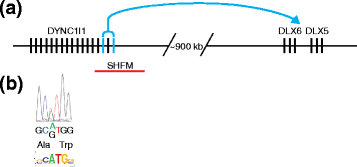Exonic enhancers: proceed with caution in exome and genome sequencing studies
- PMID: 26856702
- PMCID: PMC4745165
- DOI: 10.1186/s13073-016-0277-0
Exonic enhancers: proceed with caution in exome and genome sequencing studies
Abstract
Exonic enhancers (eExons) are coding exons that also function as enhancers of the gene in which they reside or (a) nearby gene(s). Mutations that affect the enhancer activity of these eExons have been associated with human disease. Therefore, eExon mutations should be taken into account in exome and genome sequencing projects, not only because of the ability of these mutations to modify the encoded proteins but also because of their effects on enhancer activity.
Figures

References
Publication types
MeSH terms
Substances
Grants and funding
LinkOut - more resources
Full Text Sources
Other Literature Sources

